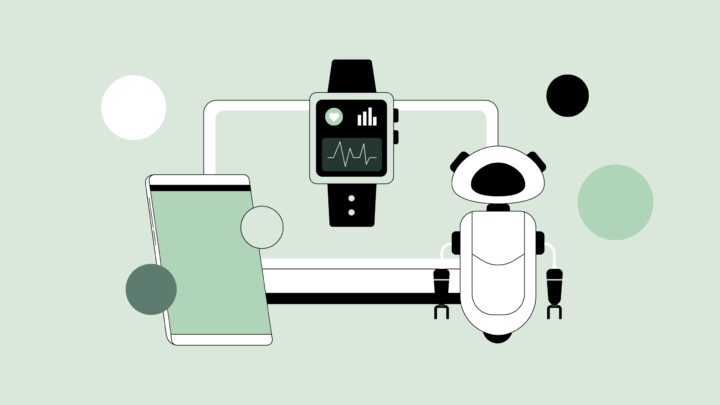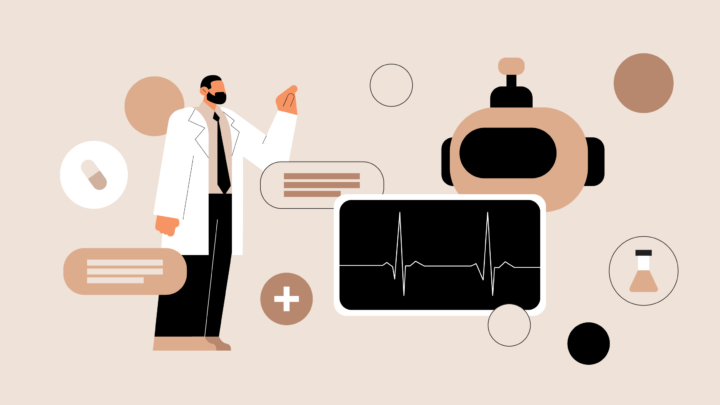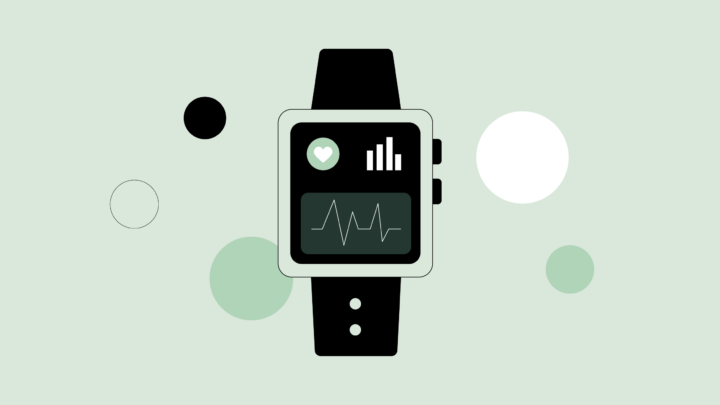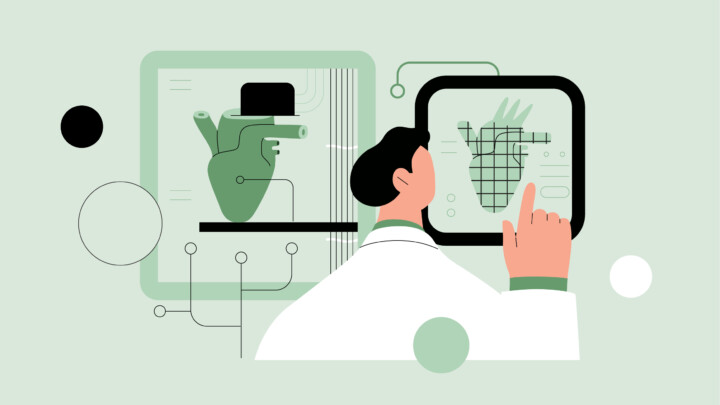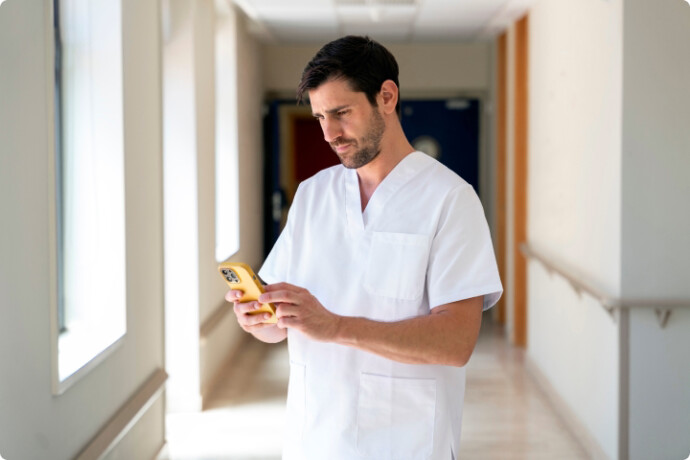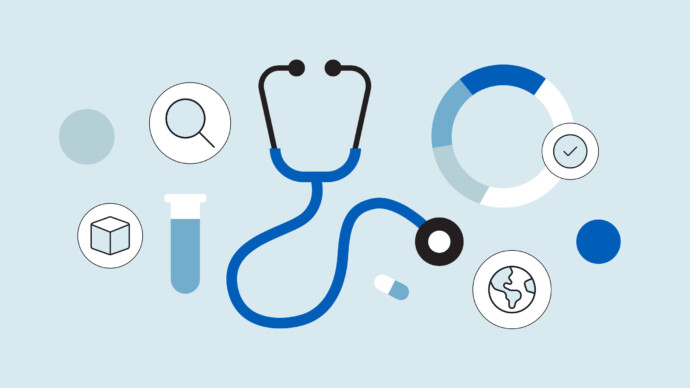
The healthcare landscape is evolving rapidly, driven by tech innovation, gaps in care, and the invaluable perspectives of medical professionals like those on Sermo. These changes promise to revolutionize how care is delivered and experienced, bringing both opportunities and challenges.
One significant insight from Sermo members is the need to ease physicians’ administrative burdens. A dermatologist in the U.S. highlighted this succinctly, stating, “Reducing administrative tasks is key. Just as administrators can’t diagnose or treat patients, physicians should not have to document everything themselves. That is what voice activation & scribes are for. Some places just don’t get that physicians can see more patients with the simple lifting of that burden.” Similarly, an OB/GYN shared on Sermo, “Anything that can reduce administrative tasks with no adverse consequences will definitely reduce physician burnout.”
2025 healthcare trends aim to address healthcare’s most pressing issues to create a future where practitioners have more time to focus on patient care. This article highlights the top trends set to alter priorities and physicians’ day-to-day work in this year and beyond.
10 Healthcare trends that will shape medicine in 2025
To better understand what lies ahead, it’s vital to consider how Sermo’s physician community perceives these shifts. Insights gathered from discussions, polls, and real-world anecdotes reveal both optimism and caution as healthcare professionals anticipate what’s next.
1. Artificial intelligence in healthcare
Artificial intelligence (AI) has swiftly moved from the realm of theory to the heart of clinical transformation. The global AI healthcare market is projected to leap from $11 billion in 2021 to $187 billion by 2030, reflecting both provider demand and the promise of improved outcomes and cost efficiencies. Today, AI is powering real change across diagnostics, analytics, administrative workflows, and day-to-day patient care. Its growing adoption is evident in everything from radiology and pathology analysis to broader system-level predictions.
AI-powered diagnostics are perhaps the most compelling and hotly debated use case. Machine learning and deep learning algorithms can mine vast troves of imaging data and electronic health records, uncovering disease patterns and flagging early warnings that the human eye could miss. For instance, recent retrospective studies have shown that AI can reduce false positives and negatives in breast cancer screenings, with deep learning models outperforming radiologists in detecting early-stage cancers. Similarly, convolutional neural networks (CNNs) can help dermatologists identify melanoma with 90% accuracy or higher—on par with experts—when trained on high-quality datasets.However, prospective validation studies are still needed to confirm these findings in clinical settings.
Predictive analytics helps healthcare teams identify high-risk patients and anticipate spikes in hospital admissions or disease outbreaks. AI boosts preparedness and resource allocation. This not only enhances patient outcomes but also holds promise in lowering healthcare costs by reducing readmissions and unnecessary hospitalizations.
Administrative automation is where many Sermo users hope for immediate relief. By automating repetitive tasks such as appointment scheduling, claims processing, and clinical documentation, AI gives physicians back precious time and could reduce burnout. As one family medicine physician on Sermo noted,
“I love the use of artificial intelligence. I believe that with proper use of language, clear requests, and a consistent structure — even with repeated formulas that ‘train’ the system — AI can be a very useful tool for doctors. It can help us streamline calculations, generate general ideas, structure plans, or resolve specific questions efficiently. Of course, the clinical case analysis, medical judgment, and decision-making remain entirely our responsibility. AI does not replace the doctor, but when used correctly, it can serve as a practical and valuable support in our daily practice.”
Still, excitement is balanced by real-world concerns among clinicians. According to a Sermo poll, the main challenges faced by physicians when adopting AI-powered tools in clinical practice include:
- 32% said fear increased liability or errors due to over-reliance on AI
- 25% cite lack of trust in AI’s diagnostic accuracy
- 23% experience difficulty interpreting AI-generated data alongside their clinical judgment
- 17% identify time constraints to learn and integrate AI technologies
These barriers echo findings in the academic literature, where issues such as trust, transparency, interpretability, and seamless EHR integration are seen as hurdles to widespread AI adoption. Robust privacy and ethics safeguards and clinician education are essential to make artificial intelligence a trusted “copilot”—one that supports, but does not replace, the expertise, empathy, and judgment that only a human clinician can bring.
As an internal medicine doctor writes on Sermo, “Definitely the shift in medicine in the future will be in the direction of developing more uses for AI. Hopefully, this will also help in lightening the load of necessary daily tasks incurred by the clinician in his or her practice and be able to lessen the incidence of such problems as burnout.” Indeed, AI’s real value emerges when it amplifies care, not by replacing human clinicians, but by making every patient encounter smarter, safer, and more personal.
2. Personalized and precision medicine
Personalized and precision medicine mark a major shift from one-size-fits-all care to approaches that evaluate a person’s unique genetic, environmental, and lifestyle factors. Advances in genomics now empower healthcare professionals to identify specific gene changes—both inherited and acquired—that can inform risk assessment, early diagnosis, and disease prevention. This innovative approach is particularly transforming cancer care: instead of classifying cancers solely by site, precision medicine utilizes molecular fingerprints, including biomarkers identified in tumor DNA, to more accurately diagnose and subtype cancers. As a result, clinicians can tailor therapies more accurately and select interventions that align with each patient’s genetic profile, improving outcomes and reducing unnecessary side effects.
Pharmacogenomics—understanding how a patient’s genes affect their response to medications—offers additional promise by enabling safer, more effective drug choices and individualized dosing. For example, pharmacogenomics is being used in psychiatry, where genetic testing can help determine how a patient might metabolize antidepressants, influencing drug choice and dosage to improve efficacy and reduce side effects. Precision medicine isn’t limited to treating disease; it’s also applied in identifying high-risk individuals through genetic counseling and guiding preventive strategies. Although more research is needed and challenges like access and cost remain hurdles, the use of these tools in daily practice is growing. This enables clinicians to deliver more informed, personalized care based on genetic insights and ongoing learning.
3. Telemedicine and remote patient monitoring
Telemedicine and remote patient monitoring (RPM) have become increasingly essential for enhancing healthcare access and outcomes, particularly for individuals with chronic diseases. Currently, 83% of healthcare providers endorse its use, a leap from 73% before the pandemic. Studies show that telemedicine significantly reduces disease markers, symptom severity, and increases patient satisfaction. RPM provides real-time health data—like blood pressure or glucose levels—helping providers make timely decisions without in-person visits. These digital tools cut healthcare costs and eliminate many geographical barriers. However, research shows that while telehealth improves patient-provider communication, concerns about maintaining personal connection remain.
A recent Sermo poll found a range of opinions on the long-term effect of telemedicine on physician-patient relationships: 31% of surveyed physicians feel it will enhance communication and accessibility, 39% believe it may reduce personal connection and trust, 19% anticipate no significant effect beyond added convenience, and 10% worry about increasing the urban-rural divide. As one Sermo member and family medicine physician explains, “I believe that accessing a doctor through technology is a viable option for patient follow-up. However, I’m concerned that it reinforces the already widespread idea that doctors must be available 24/7. Constant communication can blur personal boundaries and reduce rest time, which ultimately affects the physician’s well-being and the quality of care provided.”
The challenge for 2025 is balancing broader access through virtual platforms with the protection of physician well-being and the doctor-patient relationship. While RPM and telehealth show transformative potential, thoughtful policies and workflows are needed to maintain strong physician-patient connections while scaling remote care.
3. Value-based care and outcome-driven models
Value-based care is reshaping healthcare by rewarding providers for patient outcomes rather than the volume of services they deliver. Value-based models now account for around 60% of healthcare payments in the U.S., with CMS aiming to enroll all Medicare and most Medicaid beneficiaries in such programs by 2030. These models emphasize improving patients’ health, reducing unnecessary costs, and leveraging technologies like data analytics and EHRs to track and report on outcomes and spending.
Research highlights that value is defined by measurable improvements in health outcomes for the cost of those improvements, not just cost reduction or process adherence. Effective implementation requires cross-disciplinary teams, ongoing measurement, and a focus on preventive, person-centered care. For providers, this shift can bring greater job satisfaction and better alignment with patient needs. A recent Sermo poll reveals challenges that physicians must navigate. When asked, “In a value-based care model, which of the following is the most challenging?” physicians on Sermo voted:
- 29% – Balancing patient outcomes with cost-effectiveness
- 34% – Managing patient expectations about the speed and quality of care
- 15% – Maintaining comprehensive documentation and compliance
- 21% – Managing the administrative workload and meeting quality metrics
- 2% – Other
Providers must strike a balance between efficiency and quality, redesign care around patient groups, and learn from tracking outcomes. When done well, value-based care can lead to healthier populations, more effective resource utilization, and a more rewarding clinician experience.
4. Mental health integration in primary care
Integrating mental health into primary care is now recognized as essential for improving patient outcomes. Up to 75% of primary care visits involve a mental or behavioral health component, highlighting the need for holistic, accessible care. When mental health services are embedded in primary care settings, patients benefit from reduced stigma, better access, and sustained support within their communities. Models like GATHER (generalist, accessible, team-based, high productivity, education, and routine) promote team-based care with behavioral health consultants working alongside physicians to address a wide range of concerns swiftly and effectively.
Integration improves management of co-morbid conditions, continuity of care, and reduces costs by cutting emergency visits. Training staff to identify mental health issues, providing supervision, and supporting warm handoffs are key to success. Despite challenges like billing complexity and inconsistent insurance coverage, the GATHER model encourages collaboration and education for patients and providers. Integrated mental healthcare in primary care creates a foundation for healthier, more resilient patients.
5. Sustainability in healthcare practices
Sustainability is becoming more than a buzzword—it’s a driving force in healthcare innovation. According to the World Health Organization, a sustainable healthcare system improves health outcomes while reducing its ecological footprint.
Healthcare systems account for up to 10% of global greenhouse gas emissions. To address this, physicians can personally contribute to environmental sustainability by adopting practices like reducing energy consumption in their offices (e.g., using energy-efficient lighting and equipment), minimizing waste through digital record-keeping and responsible disposal of medical supplies, and promoting telehealth to reduce patient travel.
Social sustainability can be achieved by advocating for equitable access to care, participating in community health initiatives, and ensuring that their practices offer affordable options. Integrating these practices helps both the environment and patient well-being, while also potentially reducing operational costs.
6. Wearable medical devices
The global wearable health device market was valued at $13.8 billion in 2020 and is projected to reach $37.4 billion by 2028. As one GP succinctly comments on Sermo, “Wearable health technology is poised to revolutionize proactive care by enabling real-time data collection on vitals like heart rate, oxygen saturation, sleep, and activity levels. This supports earlier detection of issues (like arrhythmias or deteriorating chronic conditions), more personalized treatment plans, and improved patient engagement.”
In a Sermo survey, we asked physicians, “How do you think wearable technology will change your approach to patient care in the next five years?” The leading responses show a mix of feelings about the clinical impact of wearable devices. 37% of physicians believe it will enable continuous monitoring and early intervention, thereby improving outcomes, while 29% anticipate it will create an overload of patient-generated data, making it more challenging to prioritize care. And finally, 22% believe it will mainly be used for lifestyle advice rather than serious medical conditions.
Innovations include continuous vital sign collection, ECG monitors, smartwatches with advanced health metrics, biosensors, and even AI-powered predictive analytics for proactive intervention. Devices such as the Apple Watch, Oura ring, WHOOP strap, Fitbit, and continuous glucose monitors can support the early detection of arrhythmias, diabetes management, and better long-term outcomes. Integrating electronic health records and patient portals provides clinicians with real-time data, improving diagnostics and care coordination. Wearables enable remote monitoring, reduce unnecessary visits, and empower patients to take charge of their care. Overall, wearable technology can support more convenient, data-driven, and patient-focused healthcare.
7. Preventive healthcare
Preventive healthcare focuses on maintaining the health of individuals and communities by emphasizing early detection, risk reduction, and health promotion before illnesses become severe or chronic. Services like regular screenings, immunizations, and counseling for lifestyle changes, such as quitting smoking or improving diet, help to identify conditions like heart disease, diabetes, and cancer at an earlier stage. According to the American College of Preventive Medicine, this approach not only saves lives but also improves quality of life by preventing disability and reducing the burden of disease. Despite these benefits, studies reveal that only about 8% of U.S. adults over 35 receive all recommended preventive care services.
Preventive care is also cost-effective: by catching disease early or preventing it entirely, the healthcare system can avoid the higher costs of treating advanced illnesses and complications. Physicians play a pivotal role in guiding patients to understand their family health history and recommending appropriate screenings or interventions to help shift the focus from only seeking treatment for serious illnesses to taking early action.
8. AR and VR solutions in healthcare
Augmented reality (AR) and virtual reality (VR) are transforming healthcare across training, diagnosis, and patient care. VR-based simulations are now used by over two-thirds of medical schools for procedures ranging from surgery to emergency response, offering realistic practice without risk to patients. These immersive technologies are proven to improve skills, clinical preparedness, and even boost physician confidence. The FDA reports that AR and VR medical devices are used in surgery planning, mental health therapies, rehabilitation, and telemedicine, and are regularly subject to safety evaluations and regulatory review.
Innovative uses include AR overlays during surgeries to guide clinicians and VR-based rehabilitation for stroke or injury recovery. AR is changing advanced diagnostics, risk assessments, and remote consultations, bridging geographic gaps and improving hospital navigation. Challenges remain, including high costs, user adaptation, and ethical concerns in sensitive cases. Still, AR and VR are already improving patient outcomes and streamlining workflows. With more FDA-approved devices and decreasing costs, broader adoption is expected, making these tools central to modern healthcare.
9. Advances in healthcare data interoperability
Interoperability in healthcare is crucial for ensuring safe and timely access to electronic health data across various systems, providers, and regions. For private practice owners and physicians, improving data interoperability means smoother patient care and less administrative hassle. Standards like FHIR (Fast Healthcare Interoperability Resources) offer a universal framework for efficient data exchange, with 34% of US healthcare organizations currently testing or implementing the FHIR API (Application Programming Interface).
While challenges like outdated systems and privacy concerns exist, a key trend is the move towards adopting open standards for sharing patient information. This means using systems that can easily “talk” to each other, rather than proprietary ones that keep data locked in siloes.
Below are some action Items for private practice owners or physicians to consider when thinking about interoperability:
- Evaluate EHR/EMR: Ensure your system supports open standards like FHIR; consider transitioning if it doesn’t.
- Advocate for data sharing: Encourage hospitals, labs, and specialists to adopt interoperable systems.
- Participate in health information exchanges (HIE): Join local/regional HIEs for secure data exchange.
- Educate your team: Train staff on data interoperability and system usage.
- Prioritize patient access: Offer secure, user-friendly patient portals that seamlessly integrate with your main system, providing easy access to health data. Continued investment and coordinated efforts are necessary to overcome technological and regulatory hurdles.
How to take advantage of healthcare trends
2025 is set to be a milestone year for healthcare transformation, and the key to maximizing these shifts lies in shared knowledge and collaboration. Sermo’s physician-first platform is uniquely positioned to facilitate these discussions, empowering clinicians to explore solutions together. From details on wearables to debating the ethical implications of AI, Sermo members are already paving the way forward.
The future starts now, and no one understands it better than you—join the conversation, share your insights, and help shape the innovations that will define our field for years to come.

